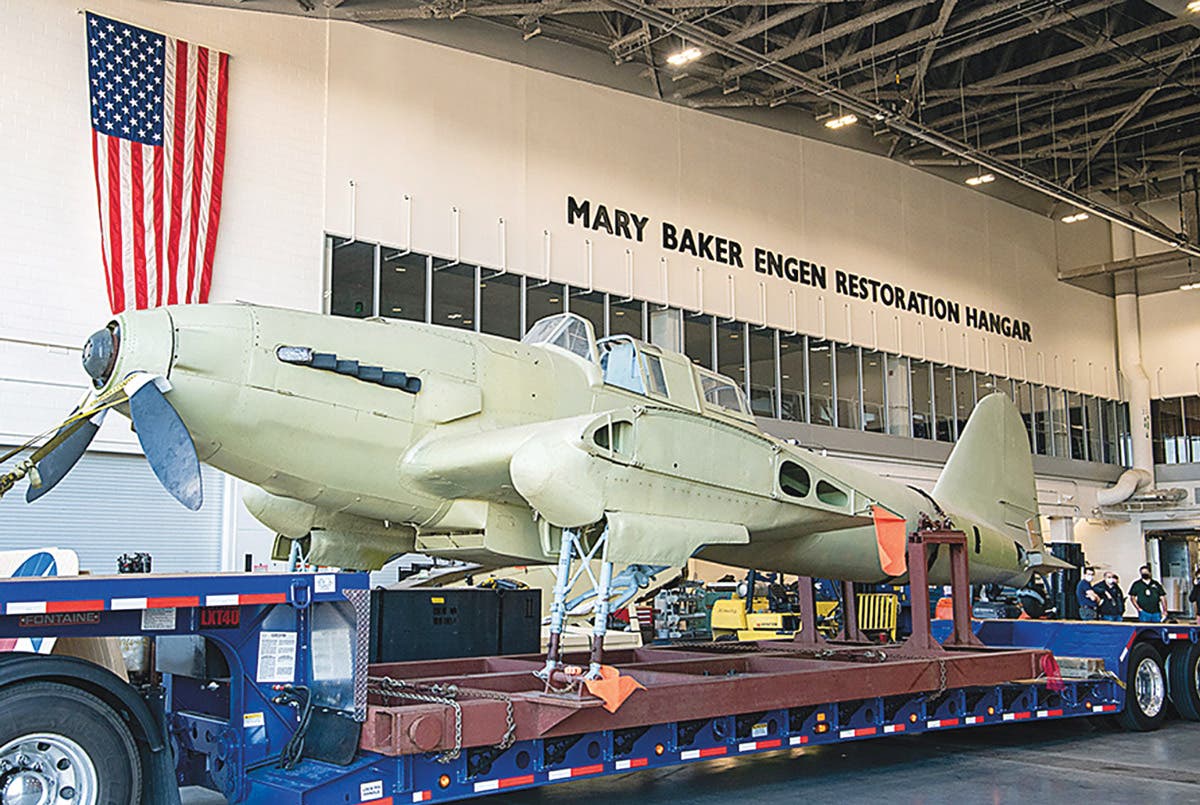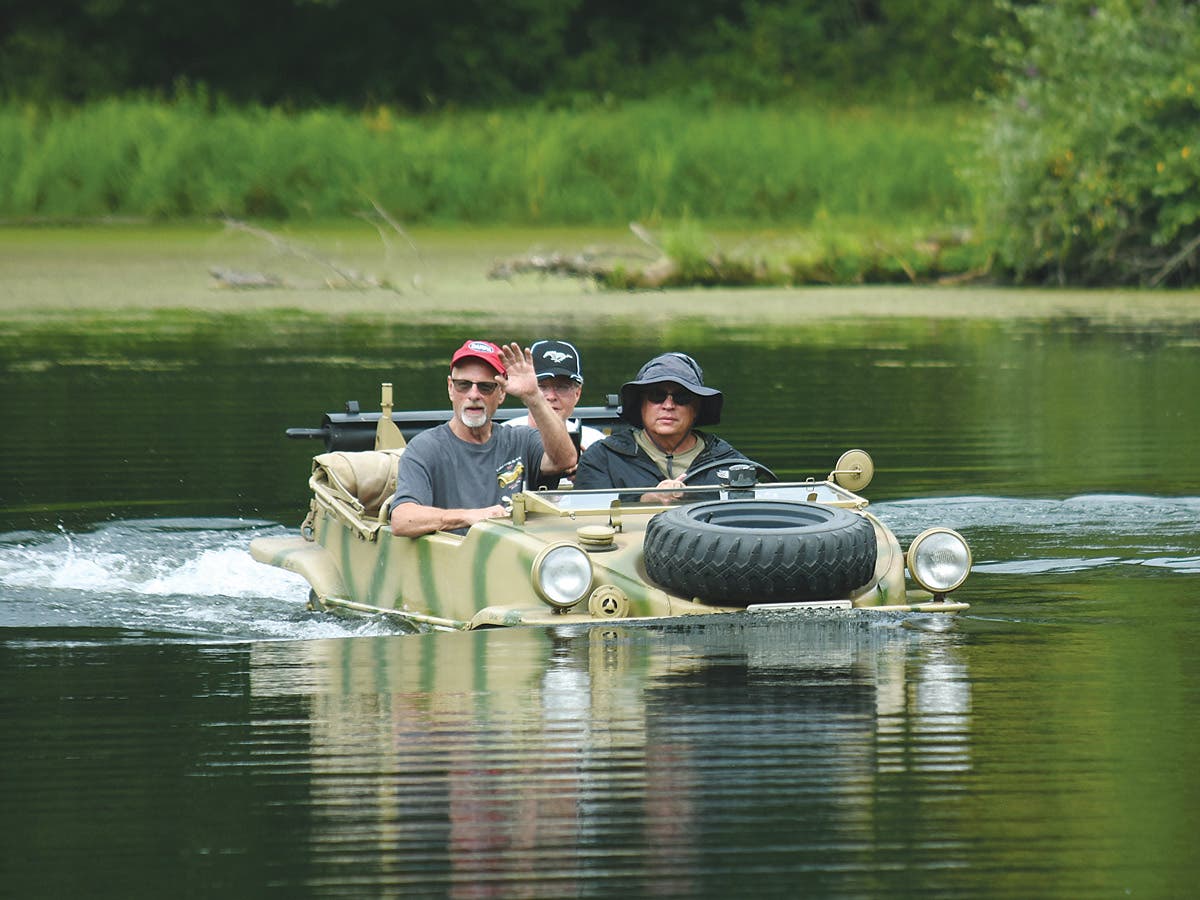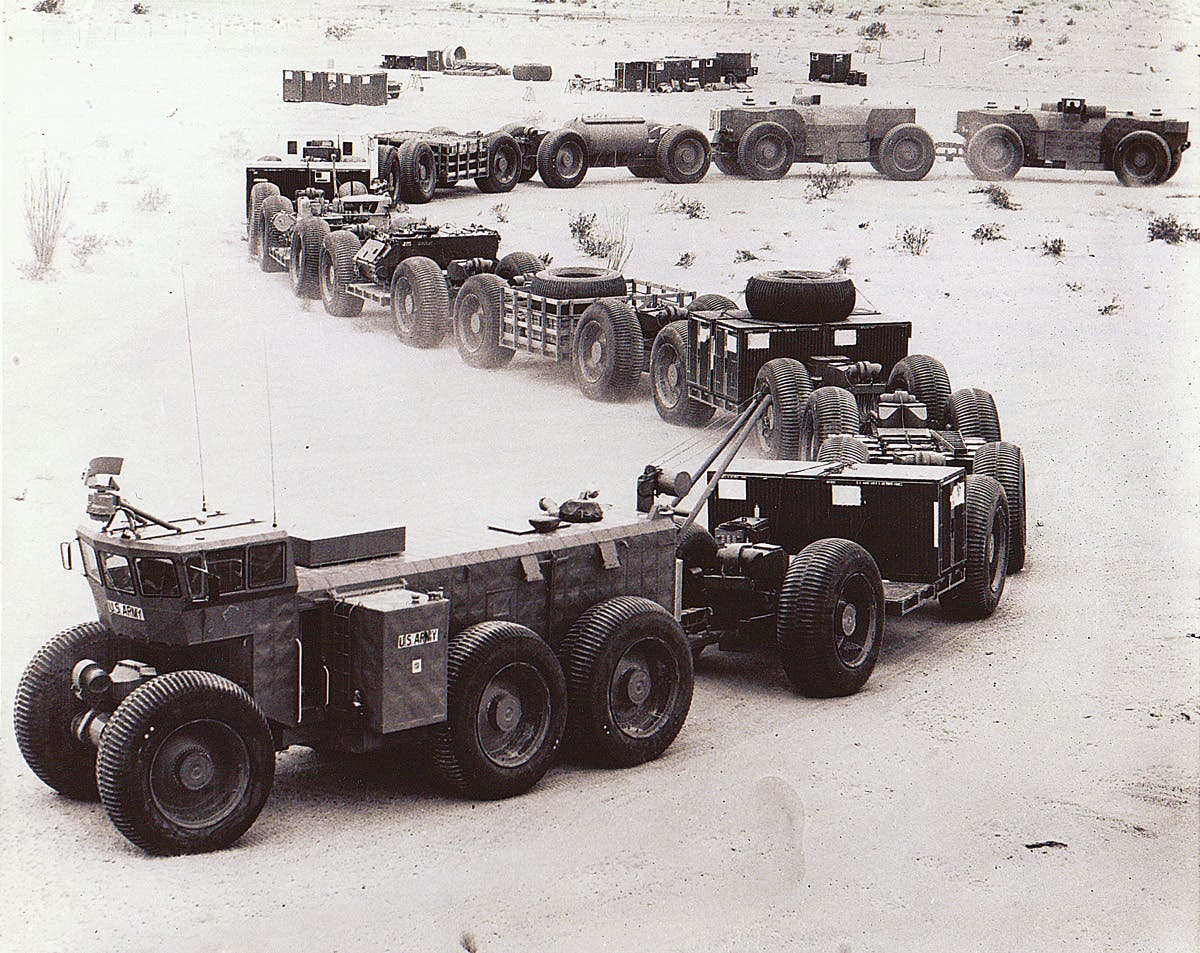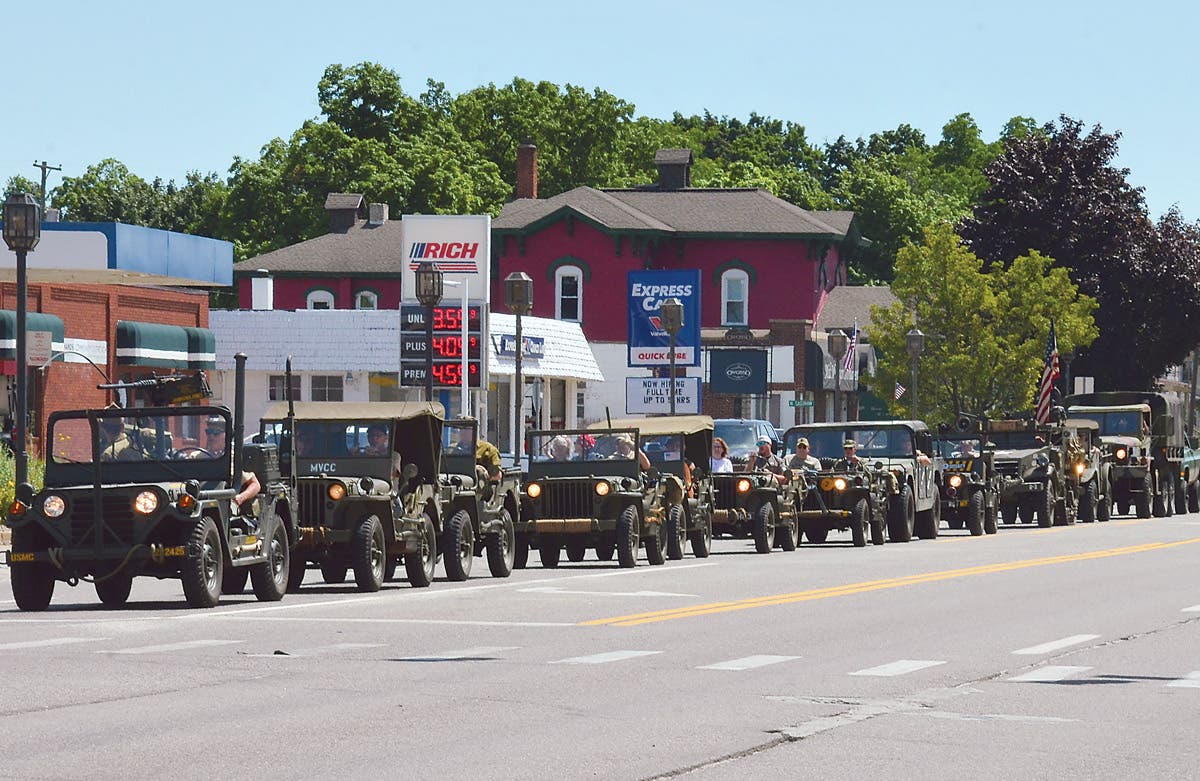Making Tracks With a Tracked Historic Military Vehicle
Most American baby-boom kids who attended public schools during the 1950s were simplistically taught that Thomas Edison invented the light bulb, Alexander Graham Bell invented the telephone, Robert Fulton invented…
Most American baby-boom kids who attended public schools during the 1950s were simplistically taught that Thomas Edison invented the light bulb, Alexander Graham Bell invented the telephone, Robert Fulton invented the steamboat; and it seemed implied that Henry Ford invented the automobile. With World War II in the recent past, it probably wasn’t surprising that kids were given the impression that these were all American inventions. It also seemed implied that television -- on which we watched WWII cartoons (in black-and-white) of Bugs Bunny slapping Der Fuehrer’s face -- was yet another American invention, circa the late 1940s, though John L. Baird, a Scottish gentleman, is generally acknowledged worldwide as actually inventing the first practical television in 1925; while Paul Gottlieb Nipkow, a 23-year-old university student in Germany, patented the first electro-mechanical television in 1884! Likewise, kids were given the impression that an American named “Caterpillar” invented the first track-laying vehicle, often ubiquitously called the bulldozer.
In reality, and as with most inventions, the people credited with their inception had often only further developed someone else’s earlier idea, and/or were merely the first to successfully market something.
While an American named Benjamin Holt is often credited in the U.S. as being the inventor of the track-laying tractor and did later trademark the Caterpillar name, he also stands accused of infringing upon the patents of others who had already built track-laying vehicles, including Clarence L. Best and Alvin Lombard (both Americans), as well as Richard Hornsby of England. Indeed, Holt later merged with Best after years of litigation over patent infringements (Lombard was simply ignored) and Holt purchased Hornsby’s patent in 1913, still claiming to have been the inventor of the track-laying tractor in 1904 — though a Russian man, Fyodor Abramovich Blinov, had built a steam-powered track-laying machine in 1881!
While there are over 100 known designs and patents predating Holt’s track-laying machines, many were never actually built, or if they were, did not prove to be practical. Interestingly, it was Richard Hornsby’s steam-powered machine of 1904 that most resembled a modern track-layer in overall configuration as well as in the design of its tracks and transport system, making Holt’s early tractors look crude in comparison. Nor did Holt originate the Caterpillar name, which is generally credited to British troops after seeing a test of Hornsby’s tractor in 1907 as an artillery prime-mover, “caterpillering over the ground.”
Regardless of who actually invented the first practical track-laying vehicle, these machines are still very much with us today in many diverse configurations, military and civilian, land-based and amphibious. “Half-tracks,” or partially tracked vehicles equipped with front wheels, skis or skids for steering, are variants of full-tracked vehicles. Tracked vehicles may also be divided into those having high speed track-laying mechanisms -- such as modern military tanks, gun-carriages, prime-movers, personnel carriers and amphibians -- and those with “slow speed” tracks, such as bulldozers, crawler cranes, and agricultural machines.
A logical question: why use a track-laying vehicle with a complicated, maintenance-intensive final-drive system, versus a simpler and easier to maintain wheeled vehicle? Two words: “ground pressure.”
The primary advantage of track-laying vehicles over those with wheels is that tracks distribute a vehicle’s weight over a much greater area of ground, thus exerting far less pressure per surface inch than a vehicle of the same weight with wheels. In other words, a tracked vehicle spreads its weight over a larger area and is therefore less likely to sink in or bog down in soft terrain. Likewise, a tracked vehicle is less prone to breaking a paved roadway or bridge deck than a wheeled vehicle of the same weight and size. Of course, adding more wheels to a wheeled vehicle also reduces ground pressure, though not nearly as much as tracks; and there is a practical limit as to how many wheels a vehicle can have.
Indeed, Holt’s success with his track-laying machines was largely due to being in the right place at the right time, namely the soft farmlands of California’s Sacramento River Delta, where the iron-wheeled tractors of the period often bogged-down.
The primary disadvantage of tracked vehicles is that tracks are a much more complex means of propulsion than wheels, are maintenance-intensive, and are more prone to mechanical failures, especially high-speed versions.
Many people in the historic military vehicle hobby have at some time or another considered the purchase of a tracked vehicle, whether a full-fledged tank or armored personnel carrier (APC) or a light vehicle such as a Weasel or an Otter. It could probably be said that a tracked vehicle is on many HMV hobbyist’s bucket lists, though actually owning one could conceivably hasten bucket-kicking by causing chronic financial stress. It should be understood that most tracked vehicles, even a jeep-sized Weasel, are usually at least twice as expensive to buy, operate and maintain than wheeled vehicles of similar size, purpose and configuration. In addition, not only are replacement parts usually much more expensive, they are often extremely hard to find; and as yet there are few reproduction parts being made for vintage military tracked vehicles... with the exception of half-tracks. Nor, compared to most wheeled vehicles, are track-layers fuel-efficient. While the purpose of this article is not to try to talk you out of buying a tracked vehicle, it is to show how much more complicated, expensive and maintenance-intensive they are, so a potential buyer can make an informed decision.
The primary difference between high-speed tracked vehicles and low-speed machines is that the former have suspension systems of springs and/or torsion bars to absorb the shocks and jolts from the vehicle passing over ground, while low-speed vehicles generally don’t. In addition, the road wheels -- which carry the vehicle’s weight and upon which the vehicle rolls -- are usually rubber-tired on high-speed machines, and in the case of the Otter are actually conventional automobile tires.
Yet another major difference between low speed tracked vehicles, such as bulldozers and agricultural tractors, and high-speed tracked vehicles, such as tanks and APCs, is that the former generally lay steel on the ground and often have cleats (“grousers”) for added traction, making them destructive to paved surfaces, while the latter usually have rubber or composite pads to protect pavement. Since most U.S. states, as well as most other countries, have laws against operating any vehicle that scars or leaves permanent marks on public streets and roads, this is another important thing to consider if planning to buy a tracked vehicle.
While it seems obvious that an intelligent person would not drive a WWII bulldozer or an iron-tracked WWI tank on a paved road or city street, if the rubber pads are badly worn on the tracks of a modern tank or APC they will also scar a street or road. In addition, many U.S. states, and other countries have laws regulating the maximum speed of vehicles with “solid tires” upon public roads, which is often under 25 mph. A track or half-track assembly is considered to be a “solid tire,” so even if one has a rubber-padded tracked vehicle, or a half-track with all rubber tracks, capable of high speeds, one may still have to drive it slowly on public streets and roads.
Both of these restrictions limit the practical distance a tracked vehicle can be driven, even disregarding the fact that track mechanisms wear rapidly and expensively. Even if the owner lives in an area of wide open spaces, they may still have to cross a public road or highway and possibly risk leaving evidence, resulting in a fine and/or the cost of repairing the road. And, again, while the rubber or padded tracks of light vehicles such as Weasels, Otters and half-tracks are kinder to paved surfaces, one may still be restricted to very low speeds.
While light tracked vehicles, such as Weasels, Otters, snow cats, Bren Gun Carriers, and even an Ontos, can be transported on “car hauler” trailers pulled by pickups or SUVs, or on medium-sized trucks, even a “little tank” like a Sherman weighs around 33 tons. Nor are “light tanks” featherweights: a Stewart weighs around 16 tons, a Chaffee weighs about 20, and a Walker Bulldog about 24. A “medium tank,” such as an M60 Patton, weighs close to 50 tons, which should be enough to provide food for thought without mentioning really big tanks.
Of course, if one is in the heavy-equipment or construction business, or is good friends with someone who is, transporting a heavy tracked vehicle to shows or to places where it can be driven may not be a problem or very expensive. But, if this is not the case, then future transportation should be one of the first things to consider before making a ponderous track-laying purchase. Also not to be treated lightly are concerns about driveways and shop or garage floors.
One should also consider what specific tools and equipment will be needed to repair, restore and maintain a tracked vehicle. Just about every track-layer had its own special needs when it comes to repairing or replacing their tracks or track pads; and a wise potential buyer would do as much research into the price and availability of such special tools as they would in learning about the vehicle itself.
The same applies to removing and installing major components like engines, transmissions and final drive units. To do such jobs safely — not only for personal safety, but also the safety of a vehicle’s components -- an owner will need the right equipment.
Hopefully, this article has offered a few useful tips, points to ponder and suggested research to do if one is considering the purchase of a track-laying vehicle. The last and perhaps most important tip is, buy the appropriate manuals and read them.
Love tracked vehicles? Here are a few more articles for your reading enjoyment.








